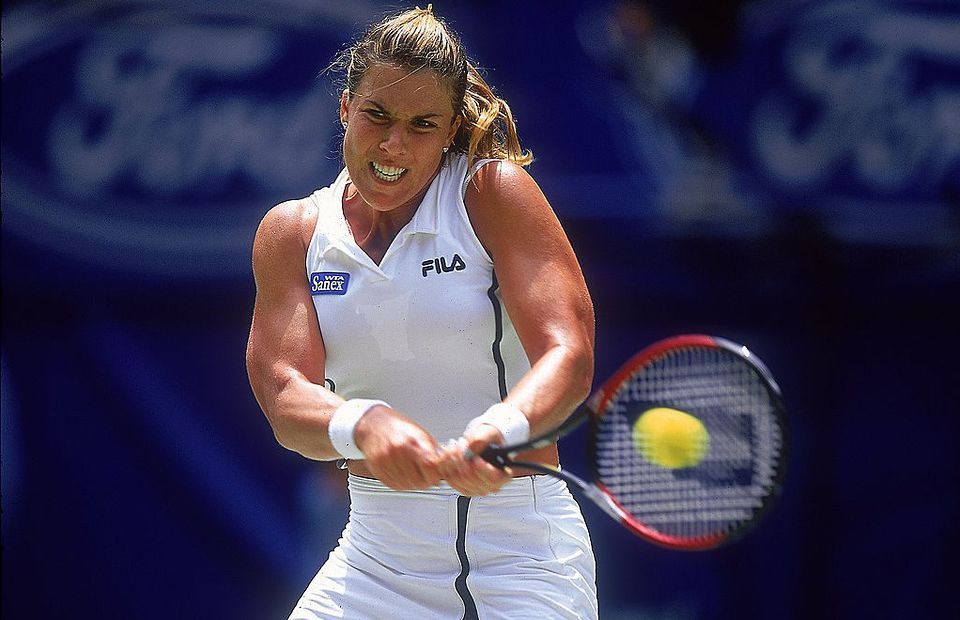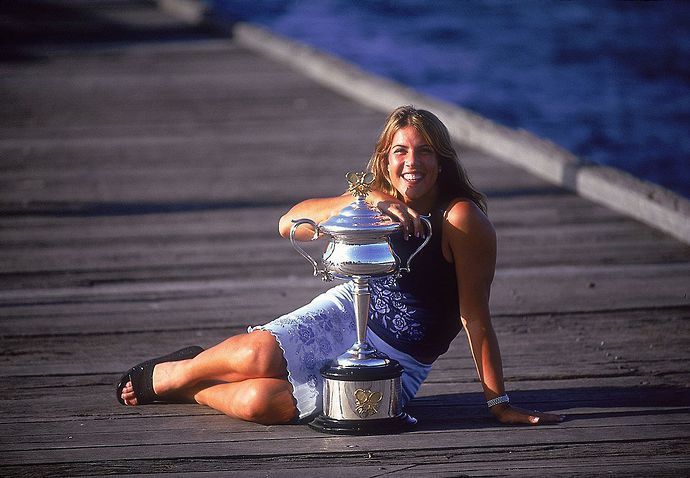“Even though I’m going to be playing older ladies, when I’m out there playing, I’m as old as they are,” a 13-year-old Jennifer Capriati told the New York Times in 1990.
This quote came shortly after the young teenager turned professional, where she would then go on to achieve a series of “youngest-ever” records.
That same year the American became the youngest player to reach a tour final. The following season, she reached the French Open semi-finals and was seeded at Wimbledon.
Aged 15, Capriati beat world number one Monica Seles in San Diego and followed this up by reaching two more major semi-finals.
And when she was just 16, the US prodigy won gold at the 1992 Summer Olympics in Barcelona –– beating tennis icon Steffi Graf in the final.
By the end of 1992 Capriati had surpassed one million dollars in prize money, making her the youngest player ever to do so at that stage.
This unprecedented success at such a young age led to a wave of media attention. Capriati was the future of women’s tennis –– fearless on court and a future Grand Slam champion.
In 1992, Sega even released their own video game called “Jennifer Capriati Tennis” –– a mark of how widespread her popularity had become.
But as the media obsession with Capriati heightened, the young star struggled to deal with the impact of being a teenage celebrity. In 1993, the American was charged with shoplifting and announced she was taking an indefinite break from tennis shortly after.
Yet, this absence from the game did not help relinquish her from the spotlight. Capriati was arrested in 1994 because of marijuana possession and later confessed to contemplating suicide.
The US star returned to tennis in 1996 but looked a shadow of her former self. Gone was the consistency and ruthless aggression many had become accustomed to seeing on court. Instead, Capriati failed to muster any sort of run in a major and her game became riddled with unforced errors.
It seemed as though a career that had promised so much had spiralled into one of missed opportunities –– until a breakthrough came in 2000.
Capriati pieced together five wins at the Australian Open, reaching the semi-finals before losing to Lindsey Davenport. Later that year, the American beat a then-upcoming Serena Williams, proving she still had the ability to compete at the top level.
And the following year turned out to be remarkable in many ways. Capriati defeated world number one Martina Hingis in the Australian Open final to win her maiden Grand Slam title. Hingis had been an outstanding junior in her own right and remains the youngest female major winner of all time.
This sparked a resurgence and Capriati would be a mainstay in the world’s top 10 for the next three years.
Seeded fourth at Roland-Garros in 2001, the American won her second consecutive major –– beating Kim Clijsters in the final. A year later, entering the Australian Open as the top seed, she successfully defended her crown to claim her third Slam victory.
Injuries blighted the remainder of her career, and the US star was forced to retire in 2004 –– her 100 percent record in major finals intact.
Having turned a career that looked to be heading for a bleak end into one of notable success, Capriati was inducted into the tennis Hall of Fame.
While she’ll forever be remembered for both good and bad reasons, her story serves as a reminder of how cruel young fame can prove to be.



















